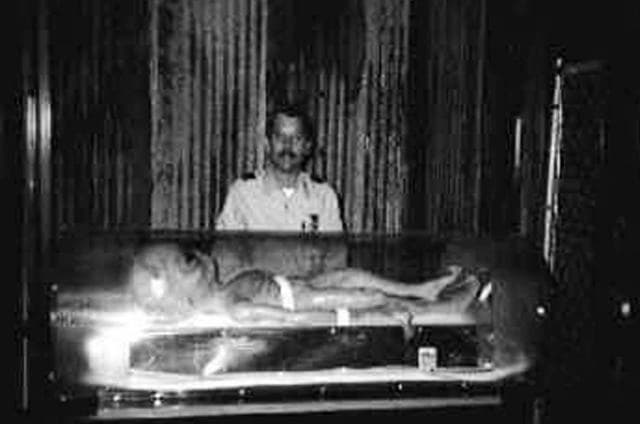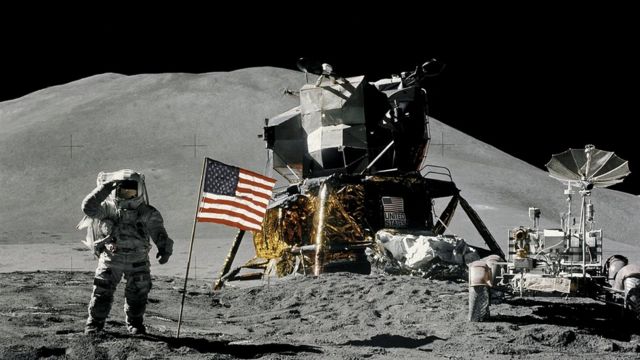Antarctica is one of the isolated regions, far from Earth’s civilization, which makes it the most favorable area to carry out a secret research operation or a place where extraterrestrial life would take shelter. A UFO whistleblower named “Brian S,” who served in the U.S. Navy, testified that he saw the entrance to a secret alien base and unidentified flying objects (UFOs) in Antarctica while serving in the U.S. Navy.
On January 2, 2015, Earthfiles reporter and editor Linda Moulton Howe received an email from Brian, who introduced himself as a retired U.S. Navy petty officer, flight engineer first class. Then, the 61-year-old Navy personnel joined the U.S. Navy in 1977 and retired 20 years later in 1997. He provided Linda with his DD214 documents and other certificates of service, including an Antarctic Service Medal given to him on November 20, 1984.
Brian told Linda that his C-130 crew encountered great oddity while transporting cargo and doing rescues in Antarctica in the period from 1984-1985 to 1997. Several times, he and the C-130 crew observed silver saucers firing into the sky. over the Transantarctic Mountains separating East Antarctica from West Antarctica.
Brian and his team also saw a huge hole in the ice, about the size of a football field, only about five to ten miles from the geographic South Pole, which was supposed to be an air sampling station but in a no-fly zone.


Linda said that during an emergency medical evacuation crisis, to speed up the trip, the crew flew through that no-fly zone and apparently saw a purported entrance to what was said to be a human-ET scientific collaboration research base under the ice.
Then, at a camp near Marie Byrd Land, a dozen scientists disappeared for two weeks, and when they reappeared, Brian’s crew was tasked with picking them up. Brian said the scientists didn’t talk and their faces “looked scared.”
Brian and his crew were given several orders at different times not to speak and were sternly told, “You didn’t see the hole in the ice, you didn’t see anything.” But Brian was never asked to sign an official declaration of secrecy. He is convinced that non-humans have worked and probably are now working on this planet.
He said in his email to Linda: “The talk among the flight crews was that there is a UFO base at the South Pole and some of the crew members have heard from some of the scientists working at the pole that EBAs (extraterrestrial biological entities) have worked with. The scientists below that air sampling field camp a large ice hole near the pole.”
Below is a transcript of the interview conducted between Linda Howe and Brain S on radio station KGRA on September 11, 2017:
Linda: Let’s start by breaking it down chronologically. You were assigned to Antarctica around the age of 84 to 85 and were on the crew of the C-130. Can you tell me about the first event of great strangeness that occurred? You lived in McMurdo and received an emergency call for a medical evacuation. Can you tell me what happened?
Brian: As I recall, our team was getting ready that morning. We were preparing to descend to the airfield and pre-fly the aircraft, loading it for our mission. Our mission that day was not to go to the South Pole, but rather to replenish science somewhere on the western side of the continent.
It was a short flight, probably an hour and a half to 45 minutes to the scientific group that had been sent. However, we received a change of mission when we left for operations. We were told to take one of our models, fuel it to full capacity, fly to the South Pole, and then refuel before flying to Davis [Station] for a medical evacuation of someone who had been injured and needed to be evacuated from the mainland immediately.
We reached the South Pole without incident. The flight proceeded normally and no cargo was loaded onto the aircraft. We had a few more people in the crew, one of them being our paramedic, and our flight surgeon was also brought on the aircraft. They would be responsible for taking care of the patient after we picked them up and all the way back to McMurdo.
While I was fueling the aircraft at the South Pole, our navigator was plotting a course from the South Pole to Davis. I didn’t know we were going to deviate from the original plan until we were already deviating. The pilot asked our navigator, “Where are we going now? We’re not going where we thought we’d go.”
We were instructed to follow a certain course, which went right over an air-sampling station, which was about five to ten miles farther from the South Pole. This area was not a normal transit zone for our squadron, and the captain asked the crew or navigator about the no-fly zone. If we could get through this new no-fly zone, we could save time on this issue of medical evacuation. This discussion was going on after we took off.
As a crew, we decided to take the direct route to Davis instead of straying 32 miles around the air sampling station, which is roughly what they required us to do if we went in that direction.
So, we decided to fly right over it. We took off from the South Pole, and remember, the altitude at the South Pole is somewhere between 11,000 and 12,000 feet, so we were climbing with full fuel charge out of the South Pole.
We would climb up to about 25,000 feet to our first altitude and then, as we burned the fuel, we would get lighter and be able to climb higher, which also allowed us to get better fuel efficiency out of our engines and extend our capacity. reach out a little bit. We took off and we were going uphill, and about five to ten miles away, someone decided to look out the window instead of looking at the instruments and radar.
The navigator noticed it and said, ‘Hey, there’s a big dark spot here.’ So we ended up flying not directly over it, but slightly offset, so we could look to the left side of the aircraft and it was lowered at an angle of about 45 degrees and there was a big opening in the ice where the air sampling station was supposed to be.”
Linda: Just a second, Brian, because I remember asking in our interview what size you estimated and if it seemed somewhat structured.
Brain: I estimated that you could have taken one of our aircraft there. The wingspan of our aircraft is about 135-138 feet wide, so it should be large enough to accommodate that wingspan. But it was probably more the size of a football field, if you can imagine…
One thing I want to mention is that when we were flying there, we could see lines in the ice or snow, as if someone had driven through with a vehicle, like a snowmobile or one of the tractor vehicles called ice cats. These trails appeared to be a round-trip route from the South Pole station to an opening that we could clearly see from our altitude.
It was very distinctive and anything that made a line in the ice was immediately recognizable. However, it was still supposed to be a no-fly zone and it didn’t make sense for our pilot. The hole was estimated to be at least 300 feet in diameter, about the size of a football field.”
Linda: Can you describe the kind of rumor that you’ve been exposed to after sitting down with people and talking? The guy who came up and told you all to keep your mouth shut, yes.
Brian: I was going to talk about that. I want to finish our mission in Davis and then the trip back to the South Pole to refuel… We ended up in Davis about four hours later. We landed and sat on the ground with the engine still running. They brought in the injured person, we loaded them onto the aircraft, turned around, turned on the power, and took off.
We were on our way back to the South Pole when we started to approach that same gap we had crossed on our way to Davis. We got to a certain distance, I think it was 40 kilometers or something. The reason I remember this is because our browser said, ‘okay, we’re getting to that aperture again’ because the browser monitors our distance and position all the time.
He wasn’t part of the squadron, but he wore the normal green uniform that everyone wore there when they weren’t in a flying situation. He went in, put on his parka and cap, and sat down. He took off his jacket, looked at all of us, and said, “Okay, so you guys went through the no-fly zone north of the pole and violated the airspace restriction.”
Our aircraft commander said, “Yes, we did. We thought it was prudent not to waste time and save some time on our flight to get to the medical evacuation that was in Davis. We were told it was important and we shouldn’t waste any time, so we made the decision to fly over that air sampling station.”
As we talked about before, there was no reason why we couldn’t fly over that area, because we’d be so high up that the exhaust from the engines wouldn’t matter. The gentleman basically looked at all of us sitting at the table and looked at each of us and said, “All right, gentlemen, what you saw, you didn’t see. You haven’t outgrown that area, and you’ll never talk about it again. There was no backlash or any threat like, “If you talk about this, this or that will happen.”
We didn’t think anything about what it might be at that time, but later on, during missions to the South Pole, our crew stopped and we had to spend some time there because we had some dignitaries and VIPs who wanted to take a tour of the South Pole facility. We were told, “All right, turn off the engines and leave someone on the plane to watch and refuel for the trip back to McMurdo.”
We all entered the dome at the South Pole. At that time, there was a large geodesic dome that had buildings inside it, where the team and the scientists who stayed at the south pole lived. We all went in and they had these big mill vans or the SEA vans that you see on container ships, like big containers.
They turned it into buildings, so there were two-story buildings everywhere. One of the two floors was a bar or a nightclub, so we went there and sat around talking, drinking soft drinks and trying to warm up. There were some civilians there, I assume they were scientists.
One of my cargo foremen overheard one of them saying something about the operation or what was going on at the air sampling station. Later, we were talking to other crews and they heard similar things when they were at the South Pole, but they heard that there were “visitors” that they were hanging out to interact with.
So at this point, we were all confused and trying to understand what could be going on at that air sampling station. We started to think that maybe there was some kind of covert government operation or research going on out there involving extraterrestrial life.

